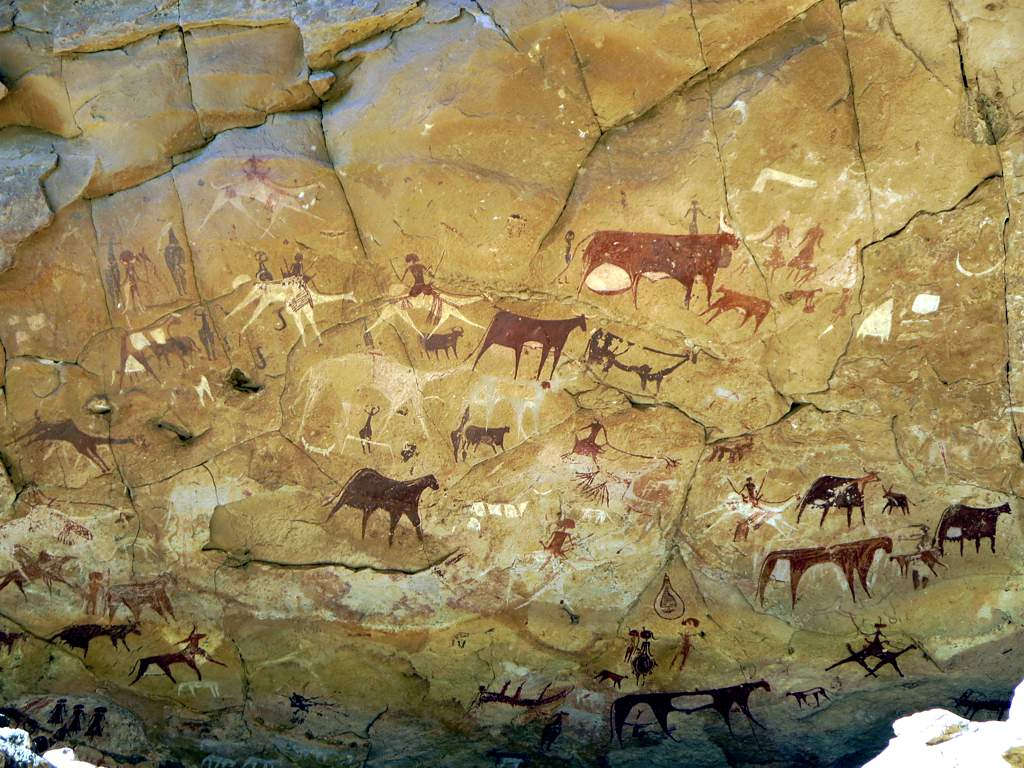As we walk through the modern world, it’s easy to forget that we are standing on the shoulders of giants. Our ancestors, who roamed the earth long before us, left behind a rich legacy of art and culture that still captivates us to this day. From the mysterious cave paintings of Lascaux to the towering stone monuments of Stonehenge, prehistoric sites and cave art offer us a glimpse into the lives of those who came before us. Join us on a journey to the past as we explore some of the most fascinating prehistoric sites and cave art from around the world.
1. Unearthing the Mysteries of Prehistoric Sites: A Journey to the Past
Prehistoric sites have always been a source of fascination for archaeologists and history enthusiasts alike. These sites offer a glimpse into the lives of our ancestors and provide valuable insights into the evolution of human civilization. The study of prehistoric sites involves a combination of scientific techniques and historical research, and it is a journey that takes us back in time to a world that is vastly different from our own.
One of the most intriguing aspects of prehistoric sites is the mystery that surrounds them. These sites often contain artifacts and structures that are difficult to interpret, and it is up to archaeologists to piece together the clues and unravel the mysteries of the past. From the ancient stone circles of Stonehenge to the cave paintings of Lascaux, prehistoric sites offer a wealth of information about the beliefs, customs, and daily lives of our ancestors. By studying these sites, we can gain a deeper understanding of our own place in the world and the rich history of human civilization.
- Scientific Techniques: The study of prehistoric sites involves a range of scientific techniques, including radiocarbon dating, DNA analysis, and geophysical surveys. These techniques allow archaeologists to determine the age of artifacts and structures, as well as to identify the materials used in their construction.
- Historical Research: In addition to scientific techniques, the study of prehistoric sites also involves historical research. This may involve examining ancient texts, studying the cultures of contemporary societies, and analyzing the symbolism and iconography of artifacts and structures.
- Interpretation: Once the data has been collected, archaeologists must interpret the findings in order to gain a deeper understanding of the prehistoric site. This may involve developing theories about the purpose of structures, the significance of artifacts, and the beliefs and customs of the people who created them.
In conclusion, the study of prehistoric sites is a fascinating journey into the past that allows us to gain a deeper understanding of human civilization. By using a combination of scientific techniques and historical research, archaeologists are able to unearth the mysteries of these ancient sites and piece together the puzzle of our collective history. Whether you are a history enthusiast or simply curious about the world around you, the study of prehistoric sites is sure to captivate your imagination and leave you with a newfound appreciation for the rich tapestry of human culture.
2. Exploring the Enigmatic World of Cave Art: A Window into Prehistoric Life
Cave art is a fascinating window into the prehistoric world, offering a glimpse into the lives and beliefs of our ancient ancestors. These enigmatic works of art, created thousands of years ago, are found in caves all over the world, from France to Australia. While the purpose of these paintings and carvings is still a mystery, they offer a unique insight into the daily lives and rituals of our distant ancestors.
One of the most striking features of cave art is the use of bold, vivid colors. These colors were created using natural pigments, such as ochre and charcoal, and were applied to the cave walls using a variety of techniques. Some of the most common subjects of cave art include animals, such as bison, horses, and mammoths, as well as human figures and abstract designs. These images were often created using simple, yet powerful, lines and shapes, and were sometimes overlaid with intricate patterns and symbols.
3. From Paleolithic Times to the Present: Tracing the Evolution of Human Civilization through Prehistoric Sites and Cave Art
Human civilization has come a long way since the Paleolithic era, and prehistoric sites and cave art offer a glimpse into the evolution of our species. These artifacts provide evidence of the earliest forms of human communication, art, and technology. From the Lascaux cave paintings in France to the Stonehenge monument in England, these sites offer a unique window into the past.
One of the most fascinating aspects of prehistoric sites is the art that has been preserved. The intricate designs and depictions of animals and humans offer a glimpse into the beliefs and culture of our ancestors. The use of color and shading in the paintings also suggests a level of sophistication that is often underestimated. These works of art are not only aesthetically pleasing but also serve as an important historical record of the evolution of human creativity. Through these prehistoric sites and cave art, we can better understand our past and the journey that has led us to where we are today. As we conclude our journey to the past, we are left in awe of the incredible prehistoric sites and cave art that have survived the test of time. These ancient creations offer us a glimpse into the lives and cultures of our ancestors, and remind us of the enduring power of human creativity and ingenuity. From the haunting beauty of Lascaux to the mysterious stone circles of Stonehenge, these sites continue to inspire and captivate us, inviting us to explore the mysteries of our shared past. So let us continue to journey back in time, to discover the wonders of our ancient world and the stories that they have to tell.




